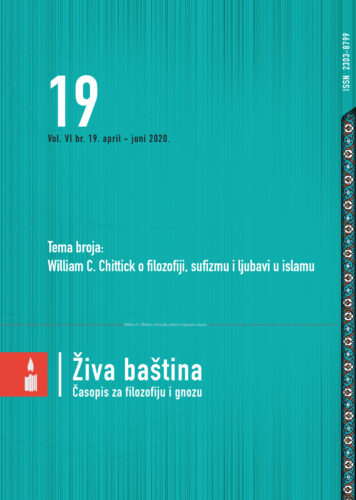UDK 1 Ibn Arebi
U pisanoj baštini Muhjiddina ibn Arebija posebno mjesto zauzima njegovo djelo Dragulji mudrosti (Fususu’l-hikem) koje mnogi smatraju sižeom njegove teozofske i irfanske misli. Ali malo je poznato da je Ibn Arebi napisao i skraćenu verziju ovog djela, pod naslovom Nacrt Dragulja (Nakšu’l-fusus) kojim se bavimo u ovom radu. Nacrt, u skraćenom obliku, sadrži sve teme kojima se Fusus bavi i izlaže ih u krajnje sažetom obliku na svega desetak stranica teksta. Na ovo djelo je komentar napisao poznati perzijski polimat Mulla Džami, čijim smo se prijevodom na engleski jezik koji je sastavio profesor William Chittick koristili u ovom radu.
Abstract
The Imprint of the Fusus Ibn Arebi
In the written heritage of Muhyiddin Ibn ‘Arabi, a special place occupies his work Fusūs al-Hikam (the Bezels of Wisdom) considered by many to be the summary of his theosophical and mystical thought. However, little is known that he also wrote a shortened version of this work entitled Naqsh al-Fusūs (the Pattern of the Fusūs), which is discussed in this paper. Naqsh (the Pattern), in the abbreviated form, contains all the topics discussed in Fusūs and presents them in an extremely concise form in only ten pages of text. A commentary on this work was written by a famous Persian polymath Molla Jāmī, while the translation into English by William Chittick was used in the paper.
Keywords: Ibn ‘Arabi, Fusūs al-Hikam, Naqsh al-Fusūs, Molla Jāmī, William Chittick
[tags]

